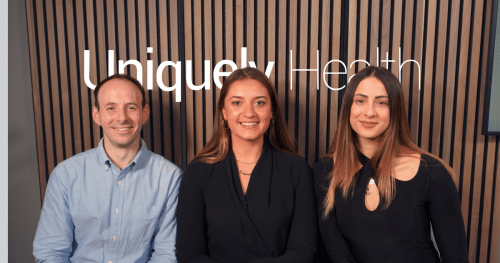Written by Sabine Hoadley, Bsc (Hons), Lead Exercise Scientist
As 2024 unfolds, many of us will reflect on the year gone by, and look to set new goals for a healthier future. Building habits can be challenging, particularly building habits that are sustainable long term.
Instead of chasing short-lived resolutions, why not focus on small, science-backed health-promoting behaviours that feel doable, even beyond the end of the challenges themselves? That way, you can build habits that help you to live a healthier, happier life.
Here, we explore some of the main habit building techniques, which can give you some practical tips and strategies to help you build, and more importantly sustain healthy habits through the year.
How do our brains play a role in habit building?
There is a process called ‘synaptic pruning’ which involves the brain trimming away neural connections that are not used leaving regularly used connections to strengthen. Synapses are the connections between neurons in your brain (1).
Essentially, if you do something every day, then that pathway in the brain will get stronger, faster and more efficient. If you stop doing something, then those connections will weaken as the energy associated can be diverted elsewhere in the brain.
Habit Stacking
Habit stacking is a theory proposed by James Clear, one of the world’s leading experts on habit formation. James wrote one of the best habit building books called Atomic Habits, a practical guide on how to create good habits, break old ones, and get 1% better every day.
“One of the best ways to build a new habit is to identify a current habit you already do each day and then stack your new behaviour on top. This is called habit stacking” (1).
Try to pair things that you do every day, such as brushing your teeth, or boiling the kettle, with a NEW habit that you want to begin.
Examples of habit stacking
- When I get home from work, I will immediately change into my gym kit
- When I take the tube, I will take the stairs and not the escalator
- After I get into bed at night, I will think of one positive thing that happened today
How to structure your habit stacking
AFTER ………… (current habit)
I WILL……….. (new habit)
You can write your own ideas for habits that you would like to build, or even document them in a habit building journal.
Set Realistic Goals
Being consistent with your habits is essential. Again, using a habit building journal can be a good place to start, as it can be a way to keep yourself accountable for the new routine that you would like to follow. It’s important to set goals that you can see lasting long into the future, rather than goals that can only be short lived.
Take a small behaviour approach.
Set goals that are realistic.
Be consistent.
Create a Routine
Whether it’s for exercise, reading, meal prep, or going for a walk, establish a routine that factors in the habits that you’d like to build this year.
Either use your diary, or a habit building journal to document when you will aim to do your goals.
Habits thrive in consistency.
Make your habits thrive in you.
How 2024 can be the start if sustainable habits.
There is no short cut to building new habits.
But there are ways that you can make your habits become sustainable by setting realistic goals, establishing good routines and stacking new habits around existing ones.
Remember, habits are here to stay, and it’s the journey that counts, so take small steps each day and find a process that helps you to become the best version of yourself.
We offer programmes that an help start, build and strengthen healthy habits. Informed by comprehensive blood testing, our General Practitioner, Registered Dietitian and Exercise Scientist can create a health and wellbeing plan bespoke to you. Together we can help make 2024 your best one yet.
Key Conclusions
1. Creating new habits can be hard, particularly if you are trying to break long-standing habits.
2. Habit stacking can be effective in creating sustainable habits by building up small changes each day.
3. Setting realistic goals and making new habits fit into your routine can help you achieve your goals.
If you are looking for support in developing healthy habits to reach your goals then book a complimentary call with our team to discuss how we can help you.









